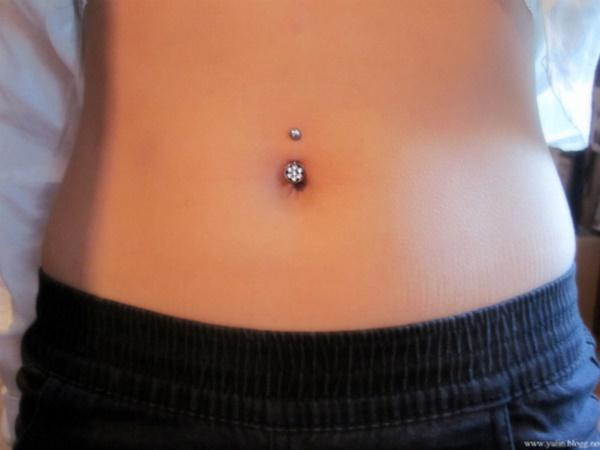
-
2.4K Views 0 Comments 0 Likes

Navel piercing, also known as belly button piercing, is one of the most popular body piercing. It accentuates your waist and you can adorn it with different jewelries. If you are planning on getting a navel piercing or if you have just gotten one, it’s important to know the basics of this kind of piercing and how you can take care of it.
Compiled below are the tips and information about the navel piercing that you might find helpful.

Types of Piercings
There are two main types of belly button piercings, the upper rim, the lower rim, and the sides. The first one is the standard piercing which is at the top of the navel ring.
The second one is at the bottom while the third one is generally the horizontal right or left sides. There are some people who get surface piercings around the navel itself but these, technically speaking, are not navel piercings.
Proper Aftercare
You may have heard or read this a thousand times but proper aftercare for navel piercing, or any kind of piercing, is important. If you do a proper aftercare, then you will experience fewer problems or issues with your piercing.
First and foremost, do not touch your new piercing. It might be tempting but keep your hands off your piercing. Do not play with it nor with the jewelry on it. The belly button rings used for the initial piercing is not meant to be changed out before the piercing is healed.
Second, stock up on or make a lot of saline solution. This solution is available in pharmacies but you can also stir one at home. With the saline solution, clean your piercing at least two to three times a day.
Third, when you do touch your piercing, make sure your hands are clean. Use a Q-Tip when removing dried fluid and do not peel it immediately. Soften dried fluid with the saline solution before you gently swab it with a Q-Tip.

The Dont’s
There are many things you should stay away from upon getting a new piercing. It’s just a small and temporary sacrifice in order to ensure that your piercing will not get infected or irritated.
Staying away from the things listed below is so much better than having to deal with a swelled and infected piercing.
Peroxide and drying soaps – when cleaning you’re piercing, do not use these for it can cause dryness and irritation.
Tight-fitting clothes – these clothes can prevent your piercing from breathing. Oxygen allows your piercing to heal faster so restricting supply of it in your piercing can prevent a full recovery.
The type of jewellery and its material can also affect your piercing and its healing. Ask your piercer for the right jewellery for you and do not change it unless the piecing is completely healed. There are times when you have to change the jewellery if such causes too much pressure on the piercing but go to your piercer to have this done.
Pools, hot tubs, and bodies of water – these places are filled with bacteria, germs, and virus. Thus, it is mandatory that you stay out of it until your piercing is fully healed.
Creams and ointments – your piercing might become dry with crusts or wet with discharges but either way refrain from putting ointment with Neosporin or Bactine for it can clog your piercing and facilitate infection.

